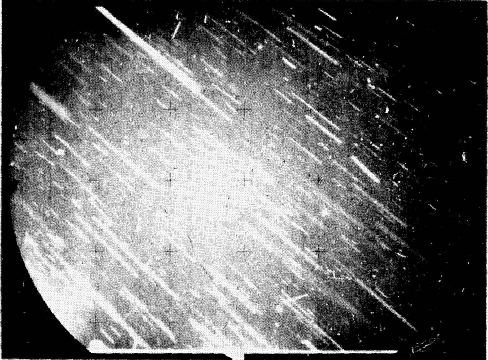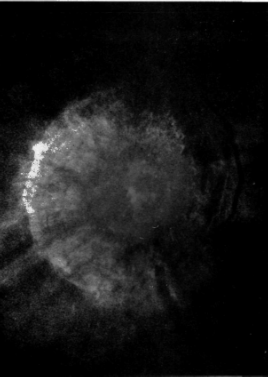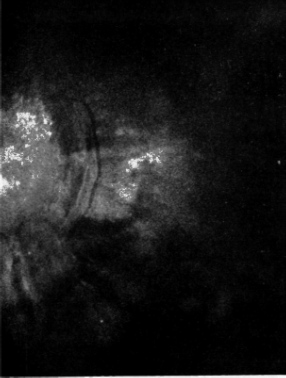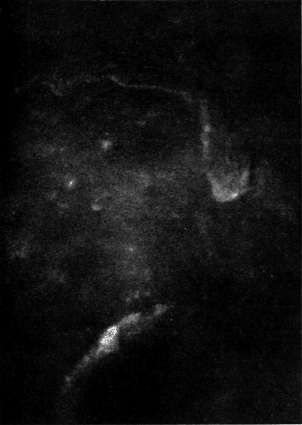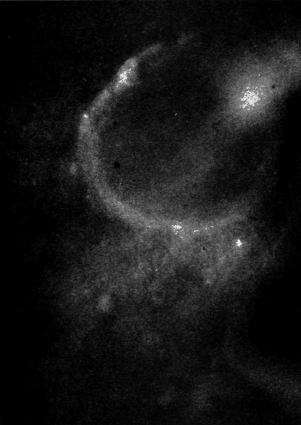As before the view is entirely consistent with the passing of the CSM overheard, with CM Pilot AL Worden taking two shots from overhead of Aristarchus, pointing northwards to Schroter’s Valley and then catching the view below him of Herodotus. The images also show a considerable amount of detail despite their poor quality.
On the same day these photographs were taken we also have Hasselblad 70mm images taken in low light conditions, and there are a number of photographs recorded in magazine 98.
The first set recorded are of the solar corona and is described as being taken at sunrise. The timeline records as 16:39 on the 31st. The best image is this one, AS15-
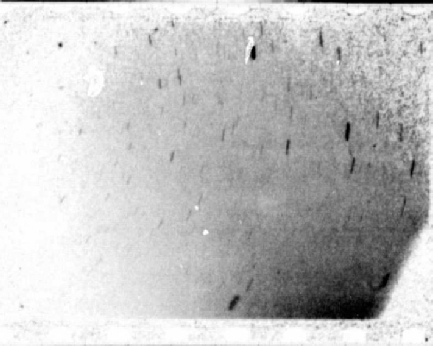
Once we invert the image we can start looking for where it is. This proved difficult, and eventually I resorted to submitting the photograph to this site, which analyses the positions of stars to determine what is shown. The report lists the picture as showing the area between 11h10m +110 and 11h45m +160 which would put Denebola somewhere in the frame. As it turns out, this is exactly what the image shows. The results of the web analysis of the image and the Stellarium prediction of the sky at the time the image was taken.

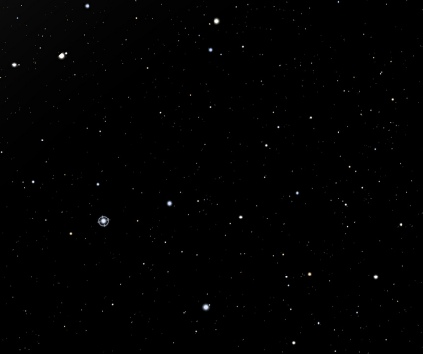
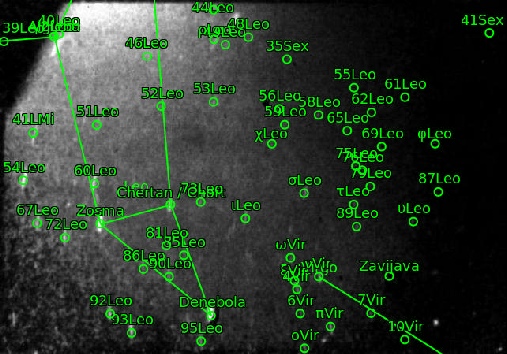
In the Stellarium version, the star with the cross hair circle over it is Zosma which, together with Denebola and Chertan, forms part of the constellation of Leo. One of the more significant points of light in the photograph is not identified by the web algorithm, and is the brighter streak of light just left of centre along the top of the photograph. Stellarium identifies this as the planet Mercury. As the web software has no way of identifying the time, this would explain why it does not identify this feature. Mercury’s presence in the image is a key factor in verifying when the photograph was taken.
What does perhaps need clarifying is what the dark area top left shows. If this were the lunar horizon, the CSM would need to have been almost directly opposite Earth on the lunar far side, but the mission transcript records Worden describing taking the photograph sequence to Houston, which can only have been possible if he were still in line of sight contact with Earth. It therefore seems more likely that the line shows the CSM window frame.
This would seem to be confirmed by examination of a photograph taken a couple of minutes before 13531. AS15-
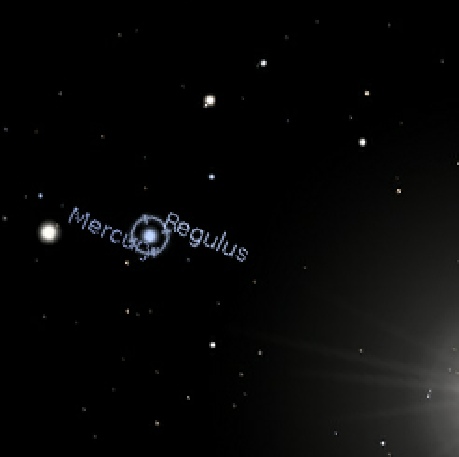
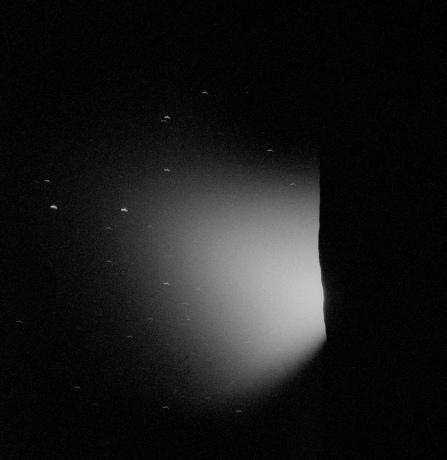
As people have observed on other sites, the planet Mercury is in the photograph, and this does help us be certain about the time and date on which the photograph was taken. Later in the same orbit, Worden takes another set of photographs, this time of the corona at sunset, or 18:04 on the 31st. The clearest image from this sequence is AS15-
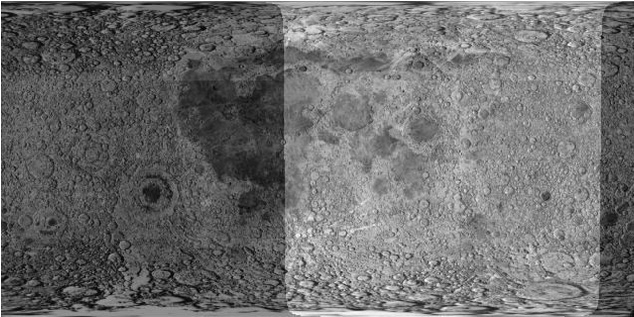
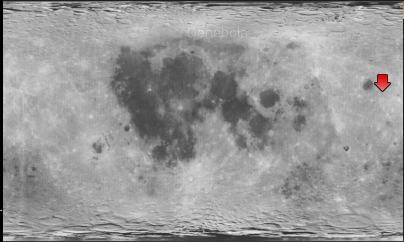
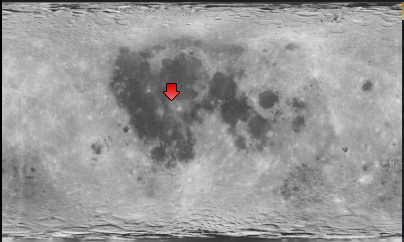
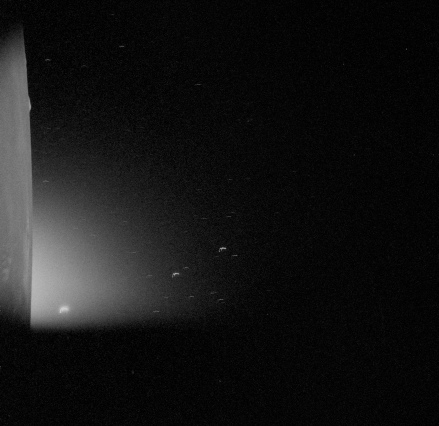
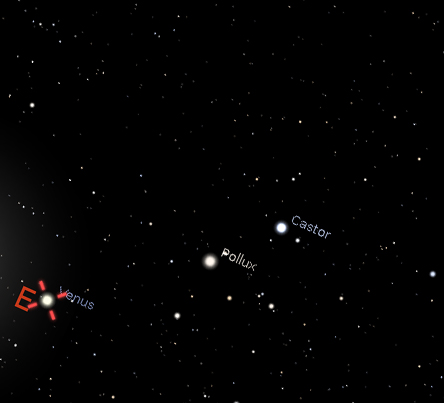
The bright object above the horizon in the glow of the corona is Venus and directly in line with it are Pollox and Castor. Once you have those in your sights it’s relatively easy to pick out other less prominent stellar objects.
Now let’s add a little more detail. We’ve already identified the two Hasselblad images used above as being at lunar sunrise and sunset and we have times for them. In order to get the best possible representation of the stellar field I positioned the viewer on the lunar surface so that the horizon created a sunrise or sunset, but I removed the ground from the final screenshot to make things clearer. Let’s have a look at where I positioned the viewer on the ground and compare it with where the terminators would actually have been at a time midway between the sunrise and sunset photographs.
The top image below is a projection of the terminators as given by this site at 17:30 on July 31st.
Below right of that is the position of the observer for lunar sunrise, and below left that for sunset.
Do they compare with the actual position of the terminators? Yes, of course they do.
Something else worth looking at in the sunset image is the large mound visible towards the top of the lunar surface -

It’s quite a large mound, but where is it?
Well. The trajectory of the CSM at the time would have taken it over the landing site at Hadley Rille. The transcripts have Worden flying over Hadley Rille roughly 7 minutes before this photograph was taken reporting to Houston at 124:25:
“Okay. Just went over the landing site and -
About 2 minutes after this he begins his photography. We have additional confirmation of this from the track marked by the photographs taken during the previous orbit (rev 23), as shown below plotted in Google Earth.
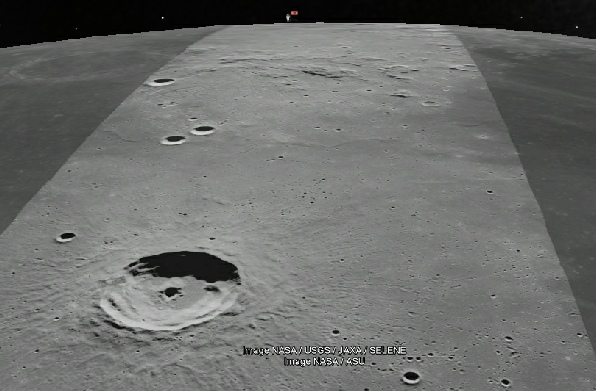
It’s very rough and ready, but it seems reasonable to suggest that Mons Hadley, at 4km high and 25+ km wide at the base is the prominence on the horizon.
The next 35mm low light photography available is dated as being taken on August 1st at 13:47 GMT, where the timeline records that Earthshine photography was being undertaken. In reality, the photographs are of Zodiacal light, and the clearest example we have is AS15-
The Astrometry website was unable to match the stars in it. The first object to be picked out positively was Denebola, and once this is identified then the remaining stars can be matched despite the obvious motion trails. The inverted image and the Stellarium match is shown below.
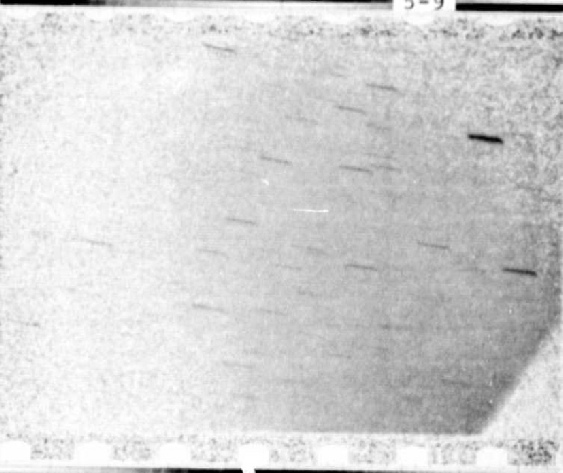
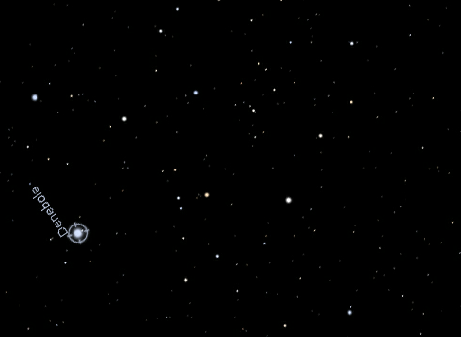
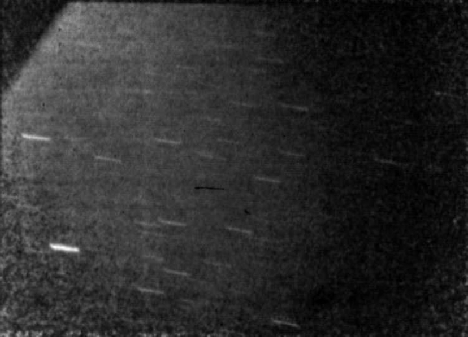
I’ve rotated the views so that the dark area visible in 13531 matches that in 13529. It is hopefully obvious that the angles of the various stars differs between the two photographs, so it must be the CSM window frame and not the lunar horizon that we see here. Another image in this sequence (AS15-
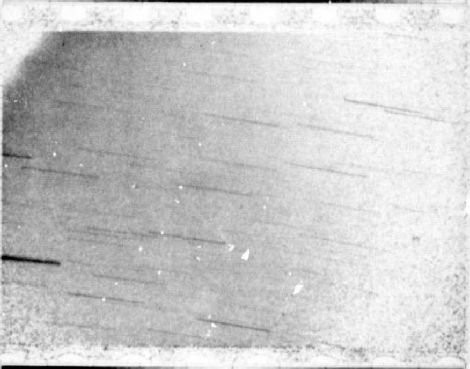
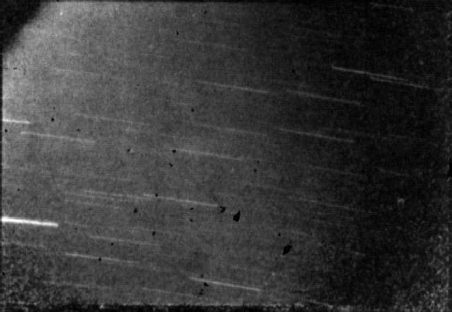
Earlier still on August 1st (I’m doing these as they appear in the report, hence the incorrect temporal sequence), we have a picture of a different part of the sky centred roughly on 14h15m and -
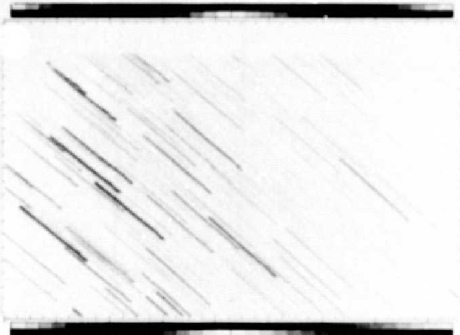
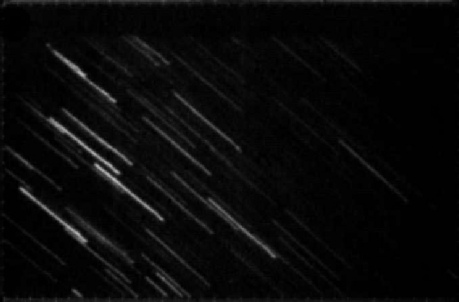
Surely this one is going to be impossible to locate? Well, no. What it shows is the impact of a long exposure taken on a moving vehicle of the constellations Lupus and Centaurus. How can we be sure of this? The first step is intuition, and we must look for a collection of bright stars in Stellarium that match the basic spread of those in the picture. To be absolutely sure, I then took the base Stellarium image and zoomed in so that the stars I had identified were the correct distance apart. Next I drew a line of the appropriate length on one of the stars, with the star at its centre. I then duplicated the process for the brightest stars around it. The result is below, with the original Stellarium screenshot on the left, and with the added lines on the right.
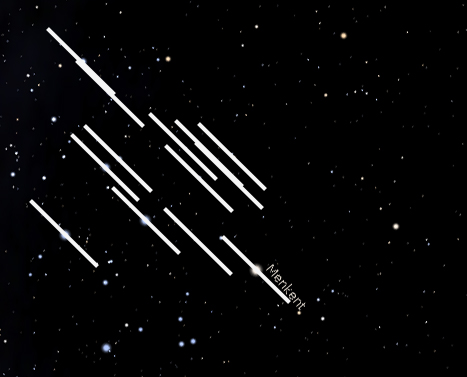
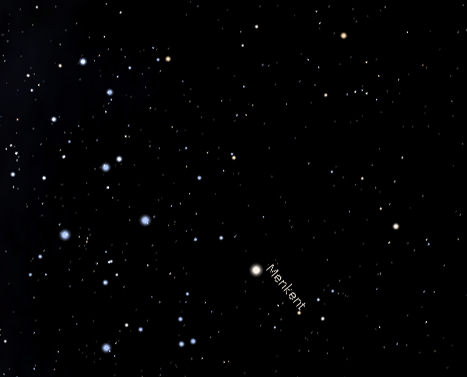
Once the lines are added it become much easier to see that we are looking at the same region of sky.
Two other photos were taken at around the same time AS15-
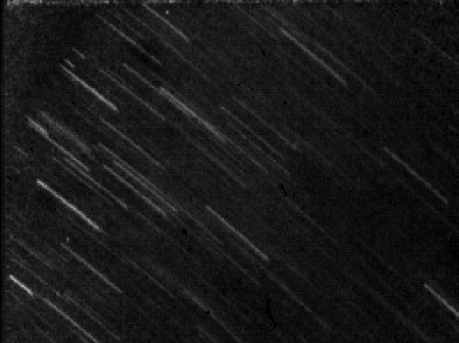
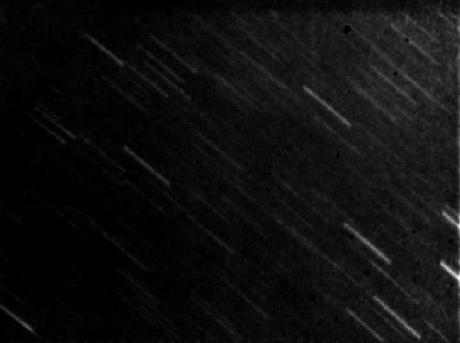
Unfortunately that’s all we have for the 35mm images. There are these 4 images (the most commonly available Apollo 15 low light images), but close inspection shows them to be part of the same series AS15-
There are more Hasselblad photographs of the final solar corona images taken during Rev 70. They show only a couple of points of light but we can still find some useful information that adds further evidence that the Apollo missions happened exactly as described.
The best of these images is AS15-
Apollo 15 Low Light Photography
Apollo 15’s low light photography had several targets, including the Milky Way, the lunar surface in Earthshine, and the Lagrange point L4.
Some of the photography was taken using the Hasselblad cameras, some with the Nikon 35mm, and a few frames attempted with the 16mm DAC camera.
The Hasselblad magazines are widely available, and the 16mm DAC frames were not particularly successful, but the fate of most of the 35mm frames are not around to assess. Those that do exist publicly are usually poor reproductions in reports. One such report is this one, which looks at how the images were processed in order to get the most information from them.
The first Apollo 15 image discussed in this report is AS15-
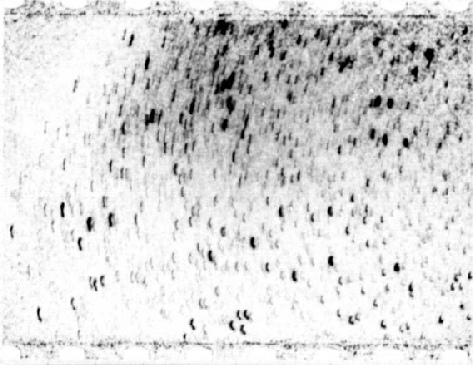
It’s inverted because it’s a negative, and for the benefit of those under the age of 30 you can see the holes on the film that the camera sprockets use to wind on the film.
But where is it?
This report that tells us that the photograph was taken around 13:37 on 31/07/71 and it was taking an image of Lagrange point L4. Lagrange points are positions in an orbit that, because of the balance of gravitational forces and orbital movements, would allow an object to be placed there without it being disturbed by the gravitational pull of the much larger bodies around it. There are 5 such Lagrangian points around a planet, and the image below shows where they are for the Earth (source).
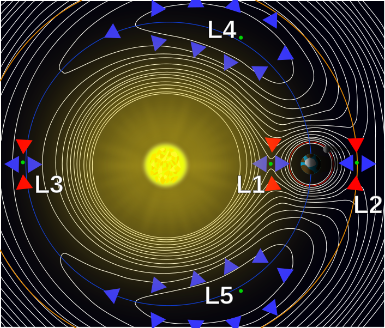
So, we know when the photograph was taken and we know roughly where to look. This allows us to instruct our trusty Stellarium software to tell us what we should be able to see, and I’ve done this below. Next to this is the Apollo photograph, which I’ve inverted to make a ‘positive’ image and cleaned up a little. Nothing has been added or removed. I’ve also rotated it, and the reason for that should be obvious
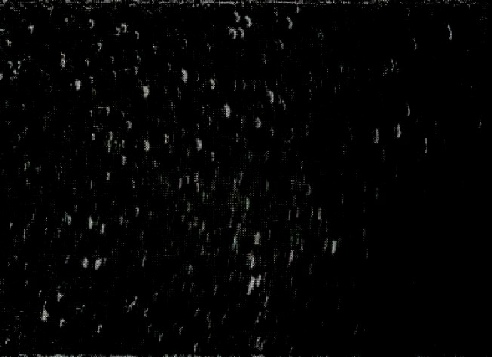
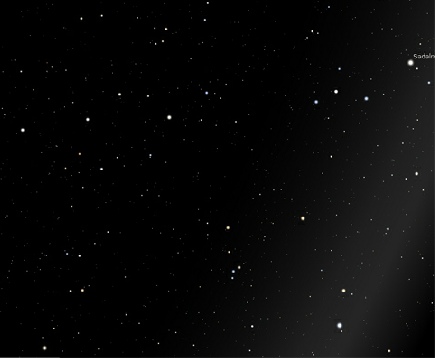
The Stellarium view is not quite rotated correctly and the Apollo 15 view is blurred thanks to the slight movement of the CSM over its 4 minute exposure. The thing to focus on here is the brighter stars -
Out of shot on the left is Earth, and just off to the right is Mars.
A quick experiment with Stellarium shows that the CSM would have to have been over the dark part of moon’s western nearside to see the stars that are in view. In itself this doesn’t prove anything, as an observatory in Hawaii could also have seen those stars at the same time, although it would be hard pressed to have reproduced the specific star trails produced by the CSM’s slow rotation.
On the same magazine, however, are photographs of the lunar surface taken using Earthshine as the only illumination. Four of these are reproduced in the Preliminary Science Report and in this report. and show Aristarchus crater, Schroter’s Valley and it’s ‘Cobra Head’ and Herodotus crater, all in the same region identified in the Stellarium shot below, together with a view from a terrestrial telescope.
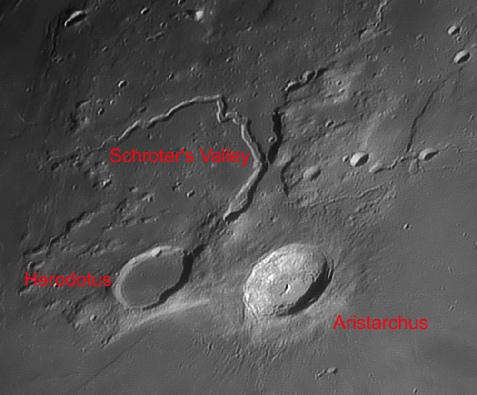
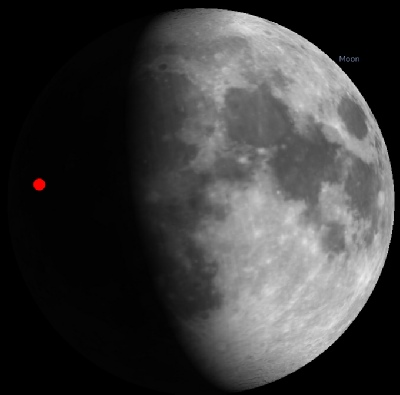
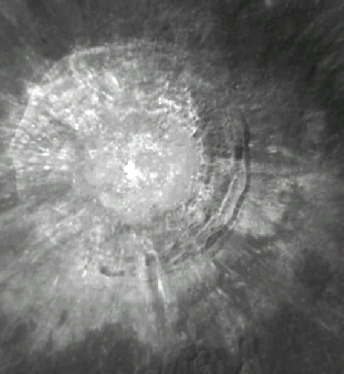
Now let’s have a look at the views from Apollo. First of all, there are two of Aristarchus crater, AS15-
What stands out here is that the view of Aristarchus given in the Apollo photographs is clearly from above -
Schroter’s valley, with it’s Cobra head’ ending, is north-
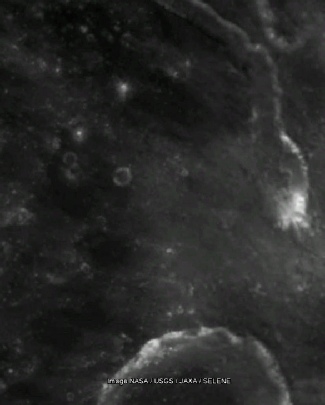
Finally there is Herodotus crater itself, shown below left as seen by Apollo and below right as seen on Google Earth.
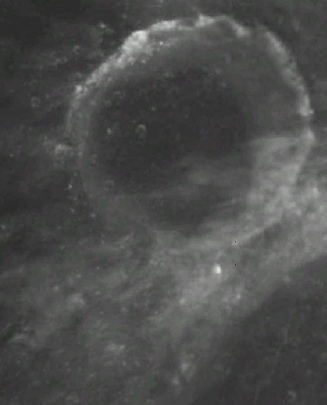
If we have an approximate speed of 1km per second for lunar orbit, a time of 7 minutes would put the CSM just over 400 km from the landing site. A quick look at Google Moon suggests that the distance from the lunar terminator and Hadley Rille is about that distance. This is illustrated by this screenshot from Google Moon, which shows the view from above the terminator looking back towards the landing site which is on the horizon. The altitude in Google Moon is given at around 120 km, roughly that of the orbiting CSM.
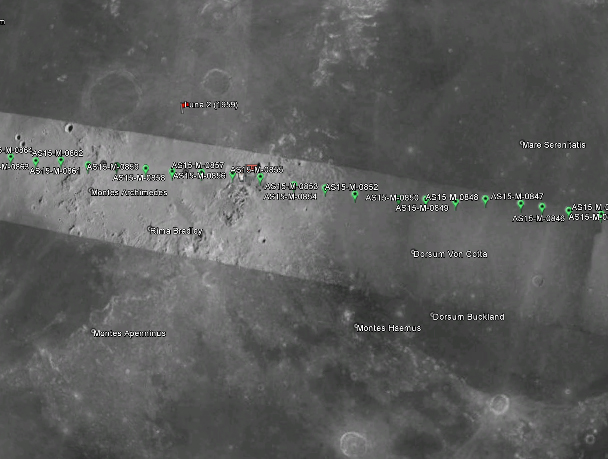
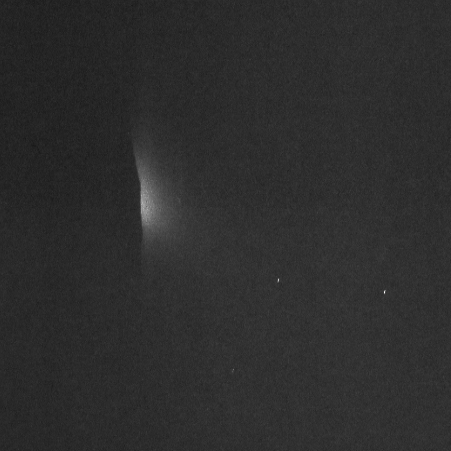
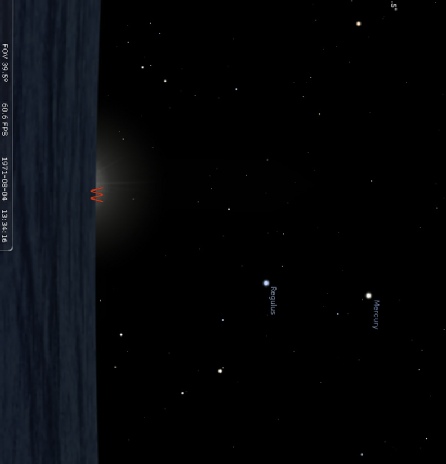
The three points of light we can see in the Apollo image are pretty conclusively identifiable as Mercury (right), Regulus (left) and, lower down, Algieba.
What is even more interesting is where those objects are in relation to the rising sun. The previous Hasselblad image of the solar corona was from an orbit that overflew Hadley Rille. If we position our viewpoint in Stellarium as on the terminator and on that orbital path, here is where those three objects should be.
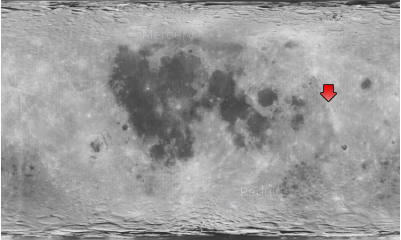
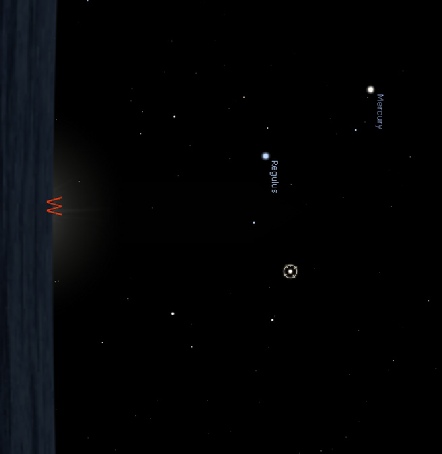
They’re in a completely different position relative to the sun! Just to ram the point home even more, here’s Google Earth’s projection of where the CSM orbits are on orbit 23 and 70/71
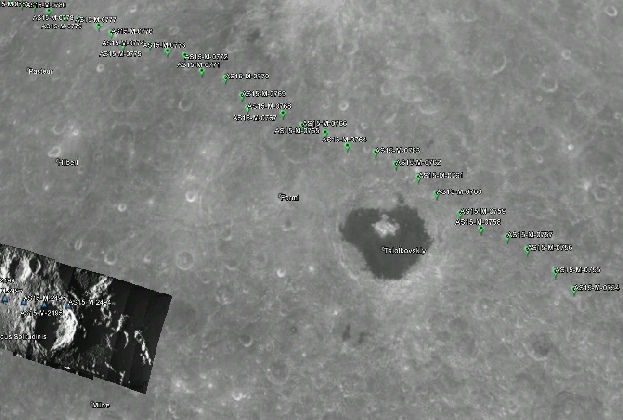
In the bottom left is where revs 70 (the vertically plotted images) and 71 started their photography just after the terminator, while running centre right to top left is the path from the much earlier orbit. The right hand margin is where the photography starts, again on the terminator.
So, not only does the position of Mercury and Regulus match exactly what should be visible at the time of the solar corona photography session on orbit 71, it matches what should be visible on the precise orbital path followed by Apollo 15. Any other position on the terminator would show a different relationship between the sunrise and the visible stellar objects. Suck on that conspiracy theorists.
There are several solar corona window calibration images at the end of Magazine 98, focused on the sun, but it is extremely difficult to decipher which points of light are stars and which are reflections on the window. So we’ll have to leave them for now.
What we can do is return to photographs of the stars. During the return to Earth Apollo 15 witnessed a lunar eclipse that occurred on 06/08/71, an event that it captured in Hasselblad images (Magazine Q), in a live TV broadcast to the press. It was also photographed by a 35mm Nikon film, and while the magazine used doesn’t seem to be available, 4 images taken over various exposure times can be found here. They are shown below.

So, where are they looking? The central object is obviously an overexposed moon, and at the time of the eclipse it would have been lined up with the main star of Capricorn as viewed from Earth, but much searching shows that it is actually in the constellation of Aquarius -
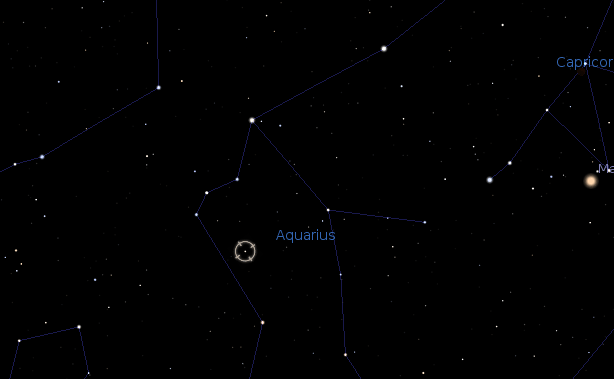
Why is this? Well, the clue is in what I wrote before -

The original diagram shows the situation just prior to the eclipse, but the situation will not have changed much as far as Apollo 15’s perspective is concerned a few moments later. It is not intended to be 100% accurate, but you should get the idea: Apollo 15’s lunar eclipse photograph could not have been taken from Earth -
So not only do we have yet more photographs of stars taken during an Apollo mission, we have a starry background behind a specific astronomical event that shows that the images were not taken from Earth, or even in orbit around the Earth -
Shortly after the eclipse images, the crew performed another set of stellar observations aimed at testing the impact of contamination from various types of dumping from the CSM (OK, let’s not be coy -
A couple of unidentified photographs with different exposure lengths from this are reproduced in negative form in this 1974 report and also this 1972 study. Helpfully the report identifies which stars can be identified, and the two photographs are shown below together with the Stellarium view.
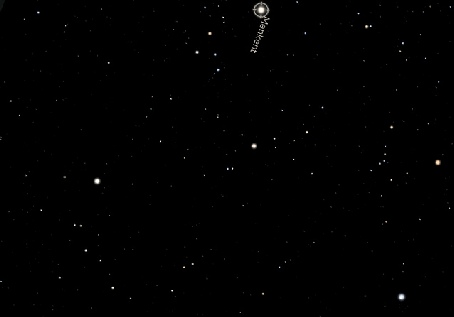
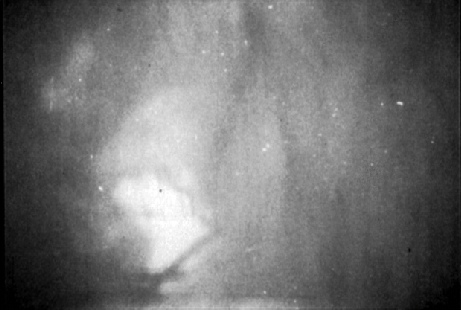

Not all of the dots visible are stars -
More stars in photographs taken by Apollo astronauts.
One final pair of images is worth looking at quickly. One appears in the same report as the contamination images used here (below left) and the other (below right) from this report, and is again illustrating the behaviour of particles in photographs when they interfere with the actual subject of the photograph.
In this instance the camera in question is the stellar camera used in conjunction with the Apollo Metric Mapping Camera to confirm the position of the CSM, and you can find more details on how that camera worked in the Apollo 16 section.
These photographs are hard to find, and have occasionally been pointed at as another example of NASA hiding something by morons who don’t get that they other than fixing position they didn’t have an astronomical use.
As this report on Apollo 17’s photography says:
“The stellar photographs, however, have marginal value outside of their use in the analysis of the attitude for the mapping camera photographs and the laser altimeter data.”
Unfortunately the only information given about the images is that it was taken in lunar orbit, and there are no clues as to when this would have been. The exposure is 1.5 seconds at a low f-
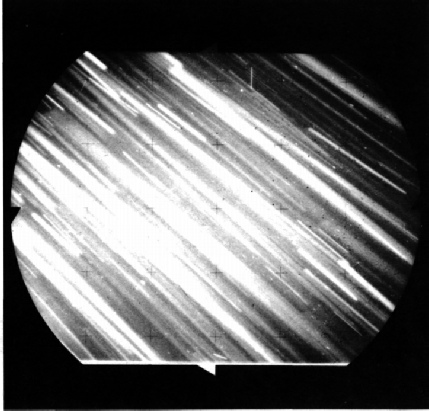
It would be nice to work out which stars they are, but unfortunately neither source, nor the references they supply, give any indication as to precisely when the photographs were taken, so for now just be happy that there is yet another camera system used by Apollo, again in lunar orbit, showing stars.
